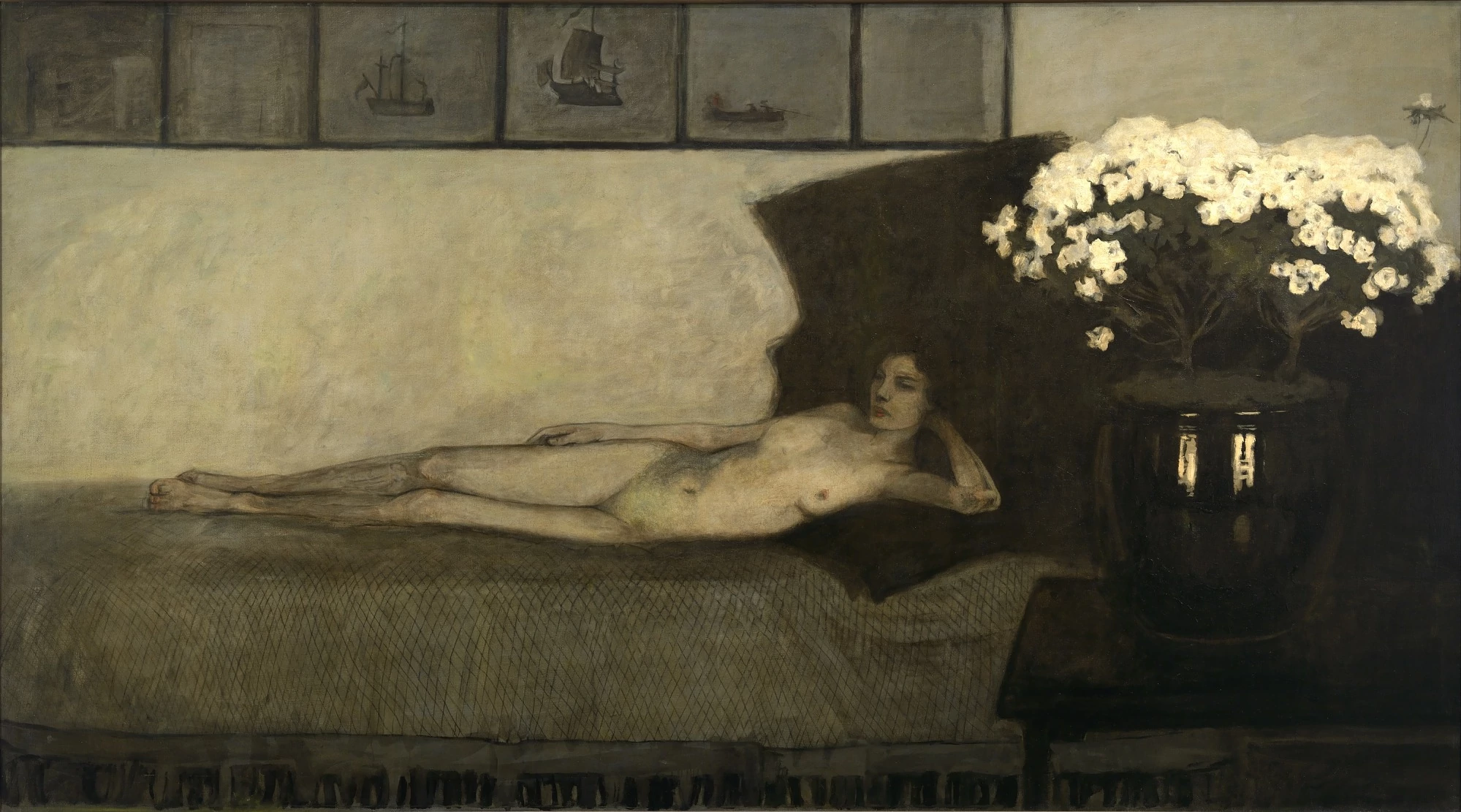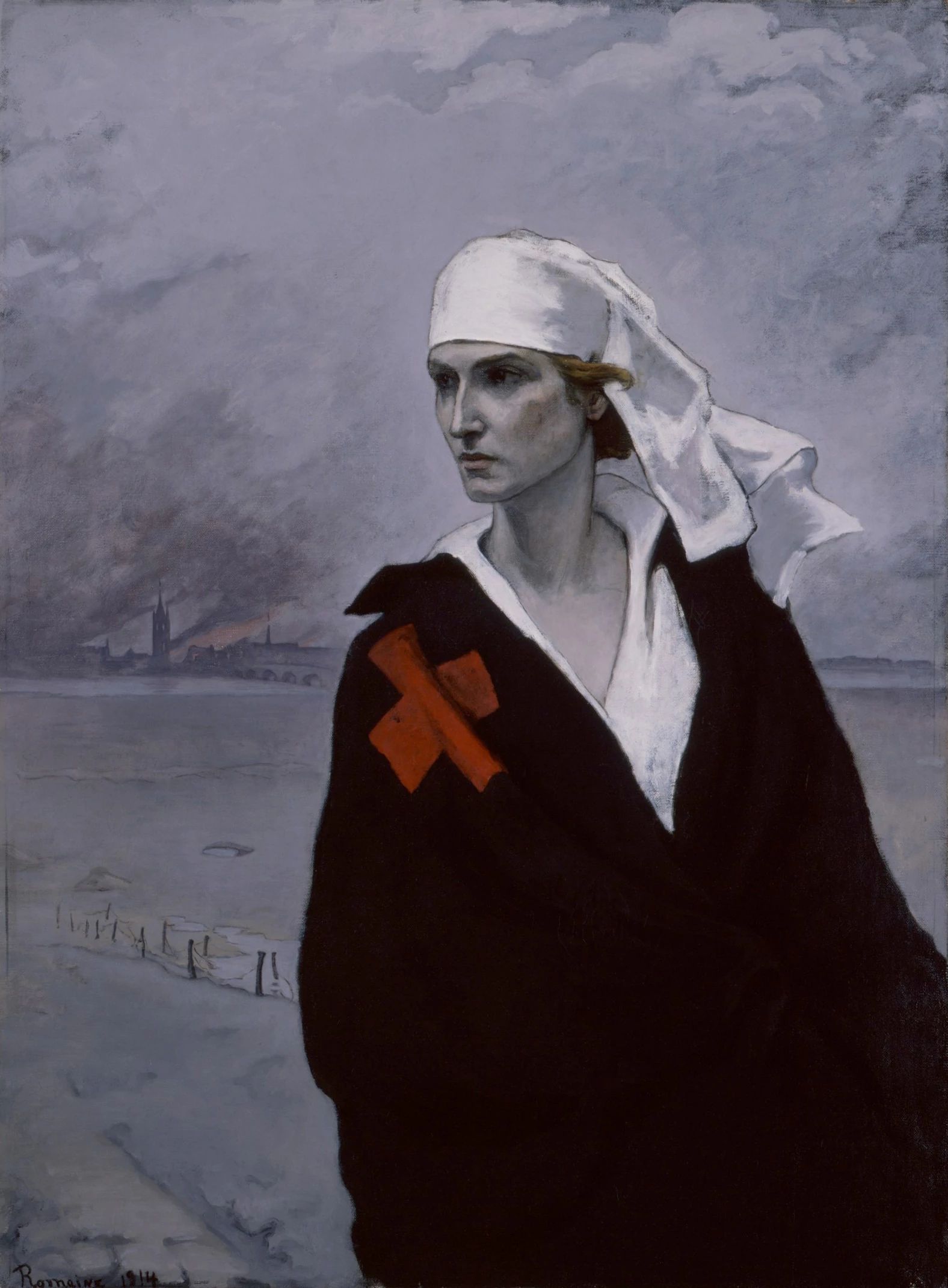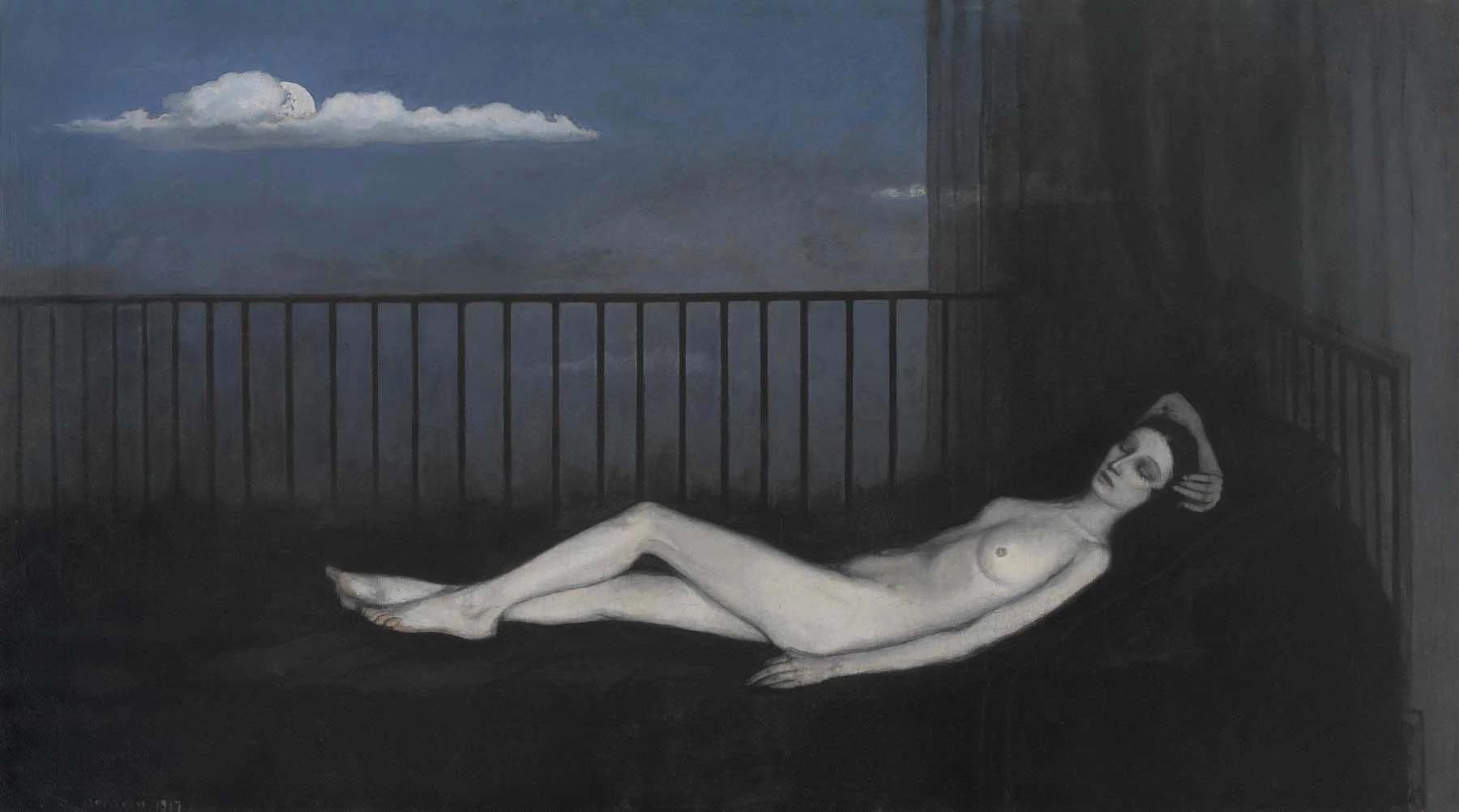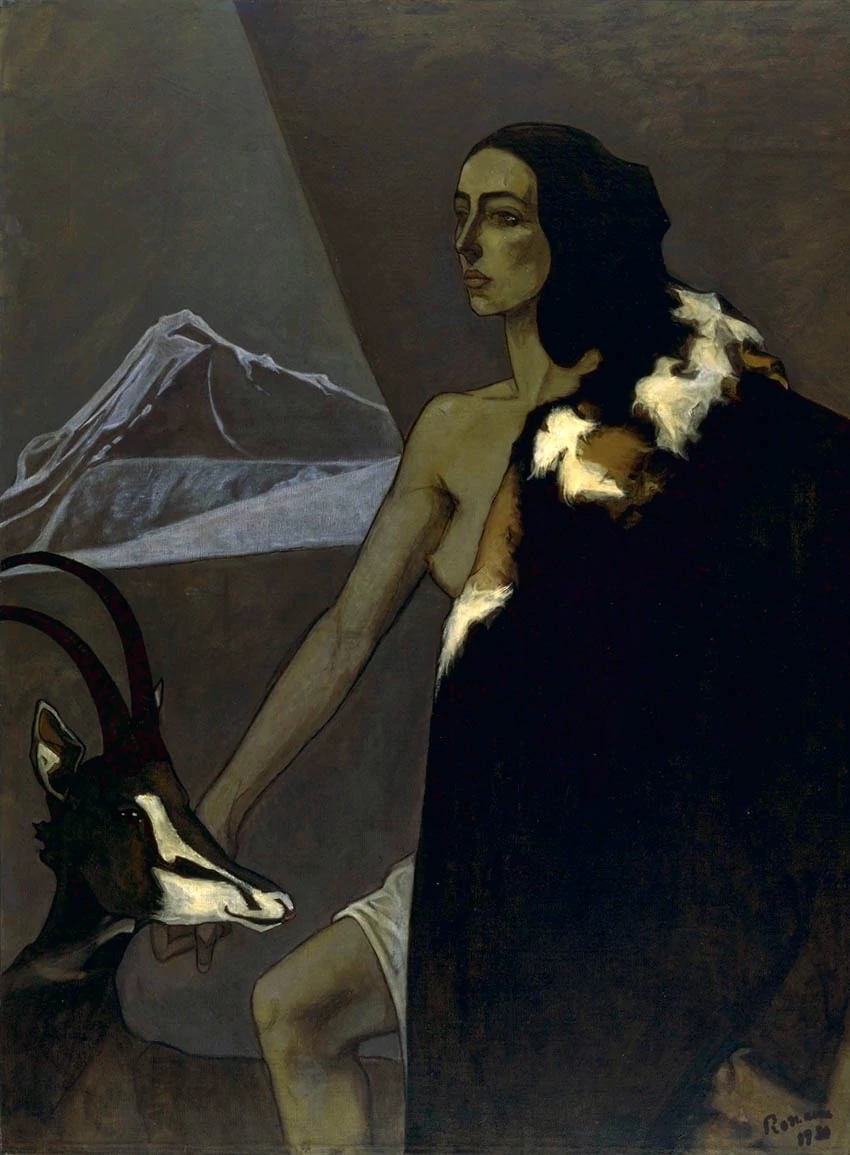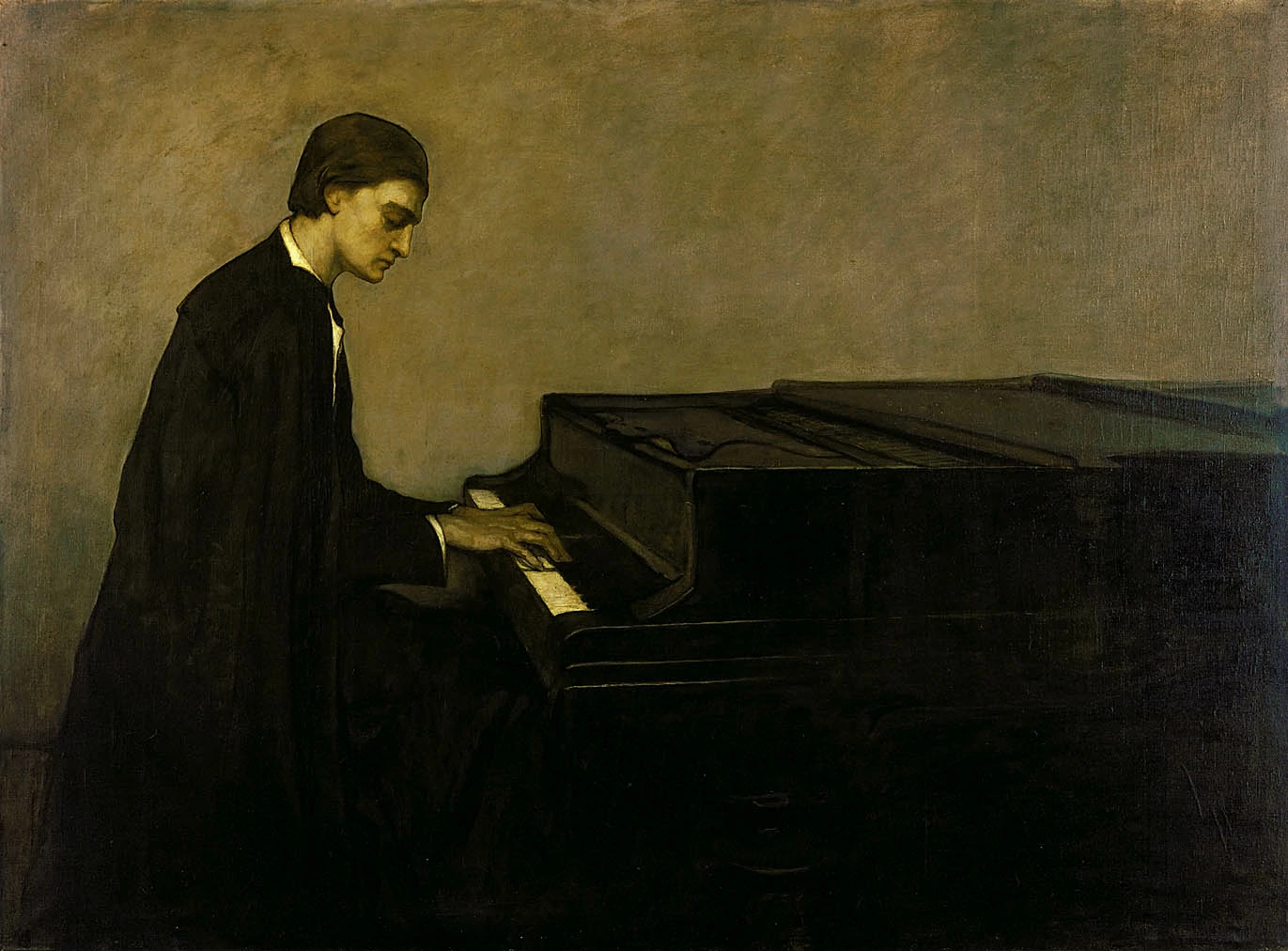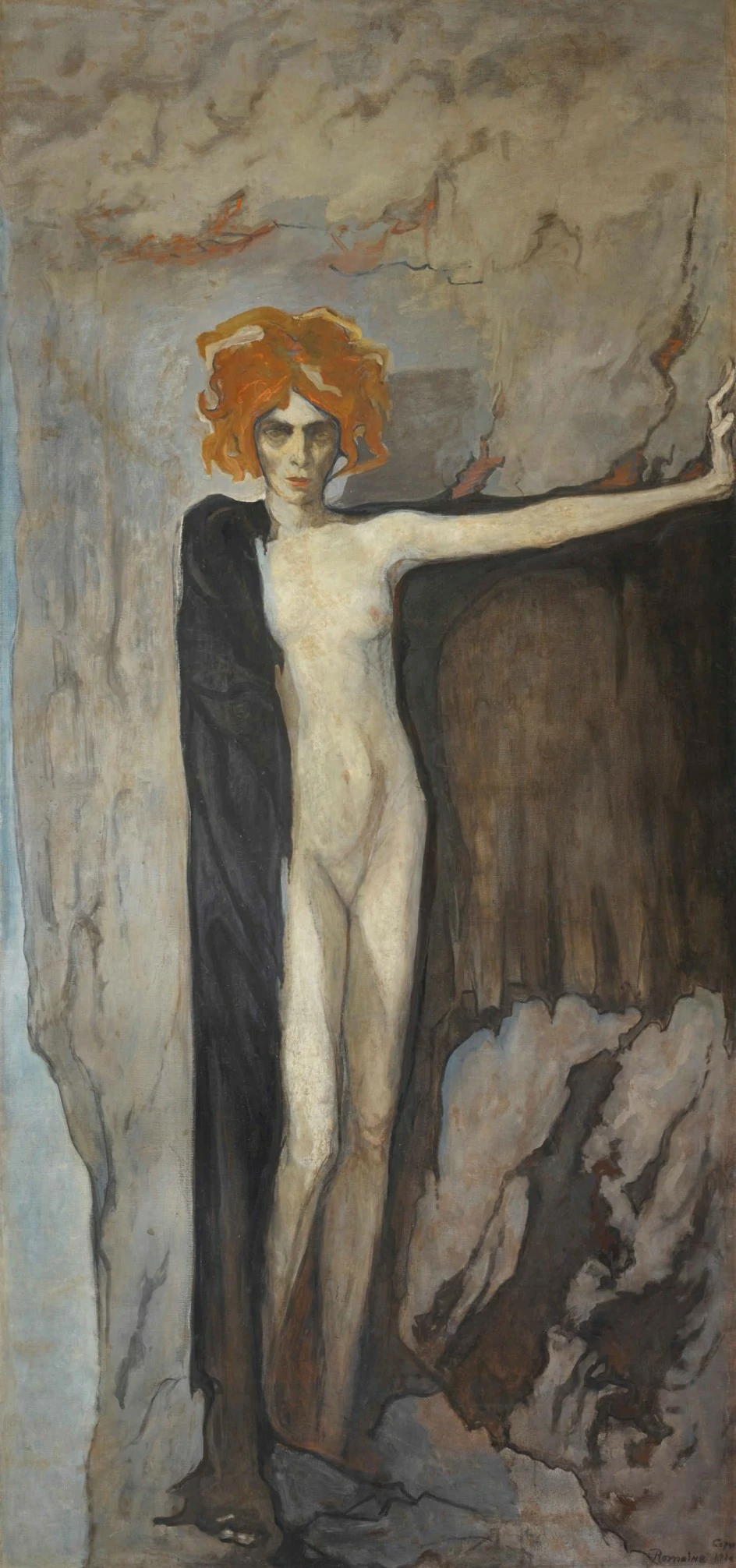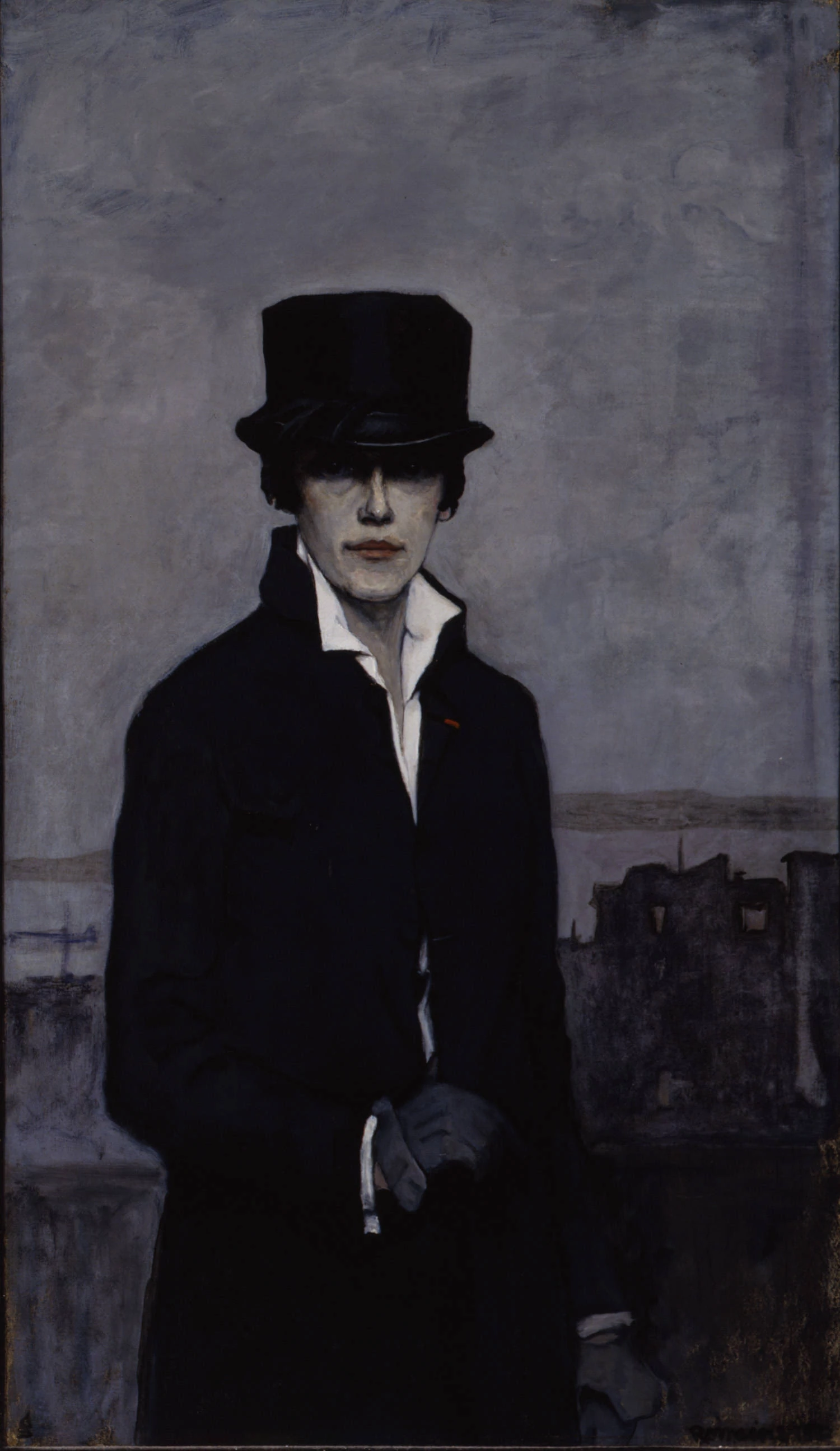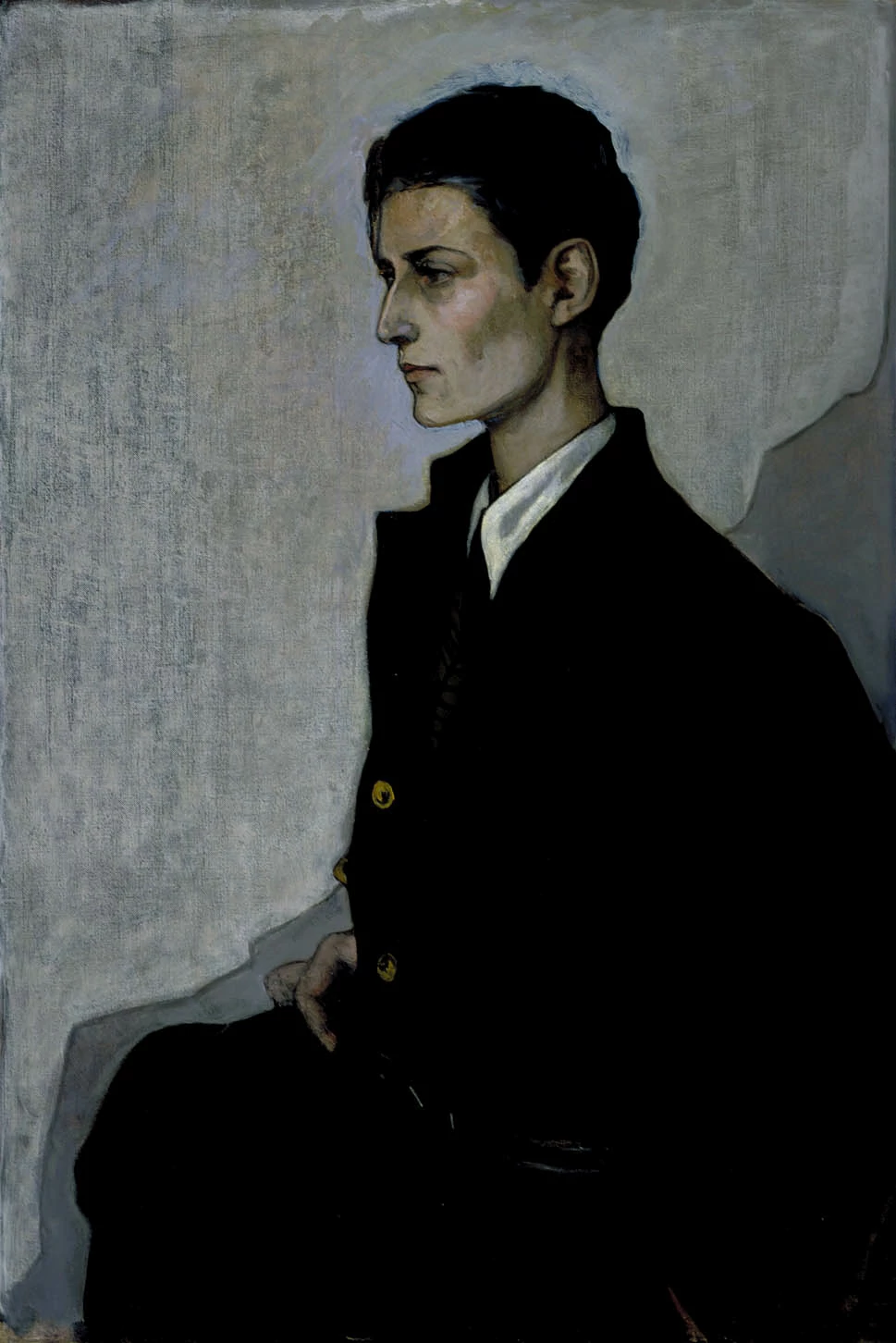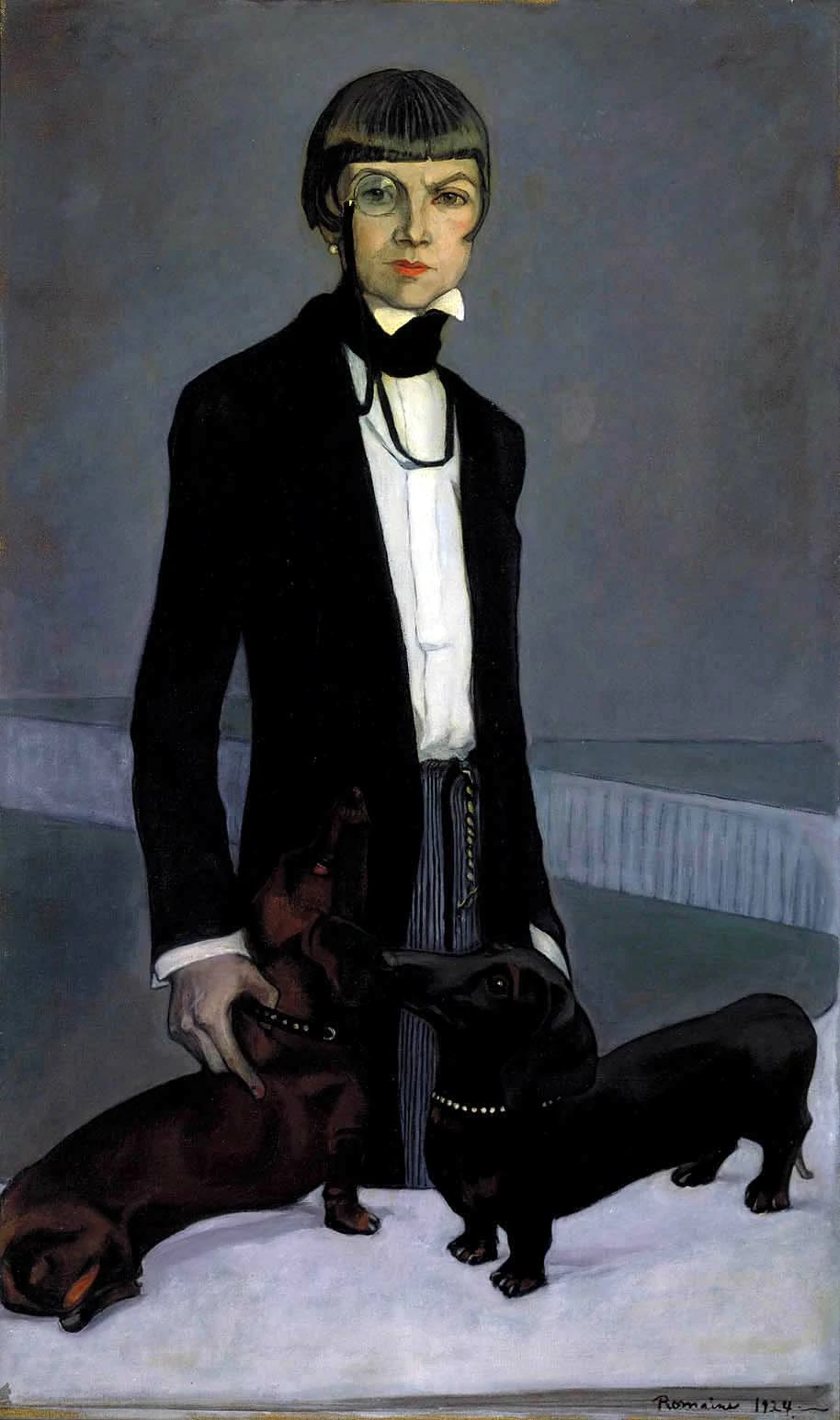Romaine Brooks grew up hard. Her mother, the American heiress Ella Goddard, wrote demonic poetry, spoke to spirits, and doted on her violent, unstable only son. Romaine’s brother St. Mar. Ella had no love for young Romaine, and abandoned her throughout her childhood—leaving Romaine with a New York washerwoman, and shuttling her off to a convent and religious boarding schools in her teens.
By 1896, Brooks was 22 and over it. She threw off her mother’s plans to make her a ‘society wife’ and moved to Rome to study art. As the only female student, she was sexually harassaed, and moved again to Paris. Without ties to her wealthy family, Brooks was soon broke, and began spending summers in the less expensive Capri. In Capri, Brooks found her people: the young homosexual intelegensia who had made a place for themselves to live with some level of normalcy.
Brooks’s damaged brother St. Mar died unexpectedly in 1901, and Romaine’s life radically changed. With the male heir of her family dead, Brooks inherited a massive fortune. Untethered from poverty, she struck out as a painter, painting friends and associates from the moody and glittering circles of creative society. Brooks traveled to and from Britain and Paris, painting, and romancing the Russian ballet dancer Ida Rubenstein, the Italian musician Renata Borgatti, and the French filmmaker and war hero Gabriele D’Annunzio.
At 41, Brooks met her match, the American writer Natalie Barney. The two became powerfully and sometimes jealously connected, eventually moving into a home with divided spaces, allowing Barney to host social guests and Brooks to maintain her precious solitude.

